Family : Trachinidae

Text © Giuseppe Mazza

English translation by Mario Beltramini
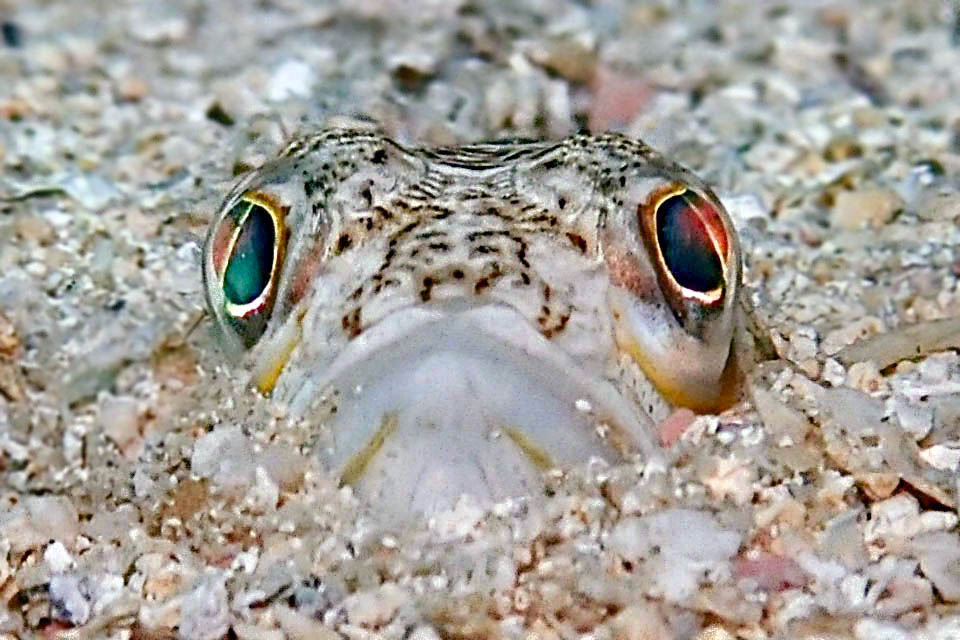
Frequent in Mediterranean, Black Sea and eastern Atlantic, Trachinus draco belongs to the spiderfishes characterized by the venom rays of the first dorsal fin © Gianfrs
The Greater weever (Trachinus draco Linnaeus, 1758) belongs to the class of the Actinopterygii, the ray-finned fishes, to the order of the Perciformes and to the family of the Trachinidae, the one of the weever fishes that were already circulating in the early Eocene, present now only with 2 genera: Echiichthys and Trachinus that counts 8 species.
The genus Trachinus originates from “dracoena”, dragon, an ancient Greek term also mentioned by Aristotle.
Un turn, the specific term draco reiterates, in Latin, this name.
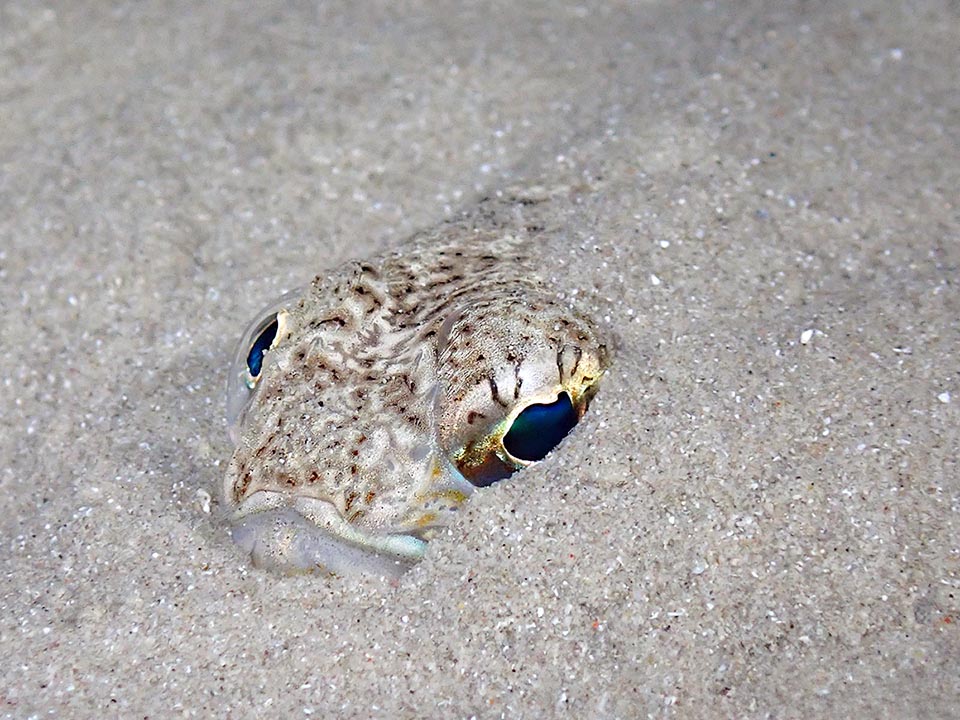
A danger to bathers because in summer often rests during the day hidden by the sand in shallow waters leaving only the eyes and the snout to emerge © Frédéric ANDRE
Zoogeography
Trachinus draco is frequent in the Mediterranean and in the Black Sea, but also in the eastern Atlantic from the southern coasts of Norway to Morocco, Madeira and the Canary Islands with some sightings in Mauritania.
Ecology-Habitat
It is a demersal fish reaching the depth of 150 m but usually living between 1 and 30 m. It goes swimming not far from the bottoms and often hunts in ambush, hidden by the sand, ready to dart lightning fast on the passing by prey.
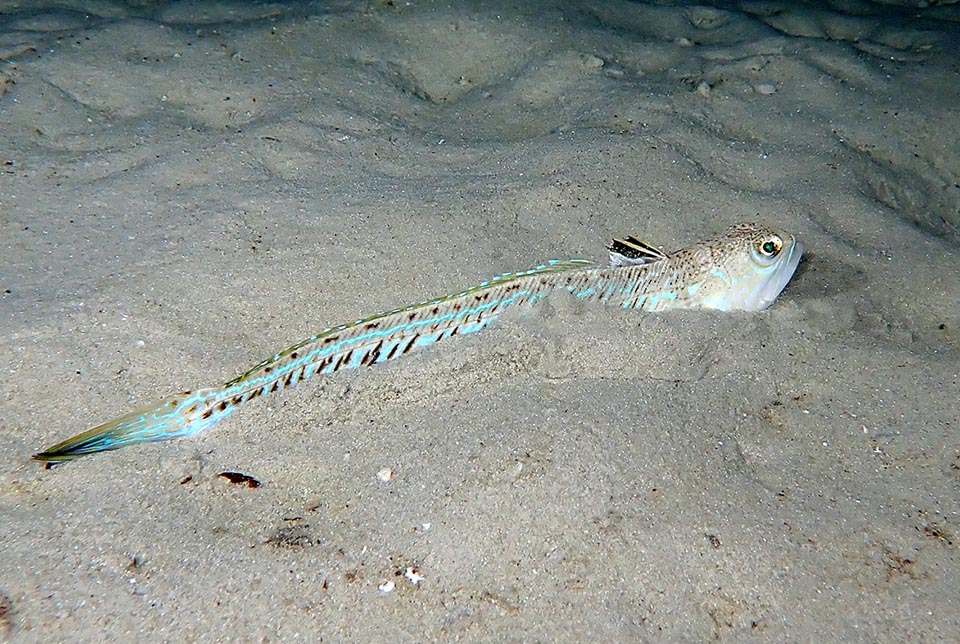
Here, more visible, it has spotted a prey and is waiting for the right moment to attack it with lightning speed © Frédéric ANDRE
Morphophysiology
The Greater weever may reach the length of 53 cm with a published maximum weight of 1,9 kg, but the current length is of about 25 cm.
The body, protected by cycloid scales, is over 6 times longer than its height.
The livery is beige in the upper parts with paler sides and blue and yellowish parallel streaks. The belly is pearly.
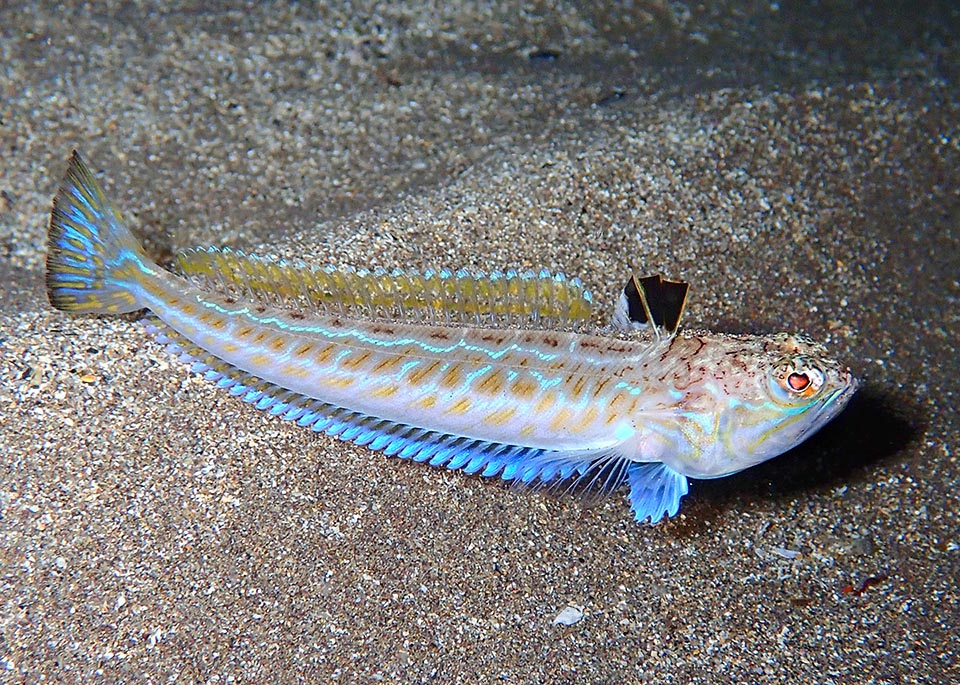
Now it’s out in the open with its elegant livery. The defense fin with venom rays is evidenced by a deep aposematic black © Sylvain Le Bris
The eyes, close together, are on top of the head close to the huge mouth tilted upwards. We note two small spines, between the eyes and the upper lip, and on the operculum a bigger one bent backwards.
There are two dorsal fins. The first, with venom rays, is triangular, short and black, the second, symmetrical to th anal, is long with unarmed rays.
The pelvic fins slightly precede the broad and trapezoidal pectoral ones, and the caudal is truncated.
Ethology-Reproductive Biology
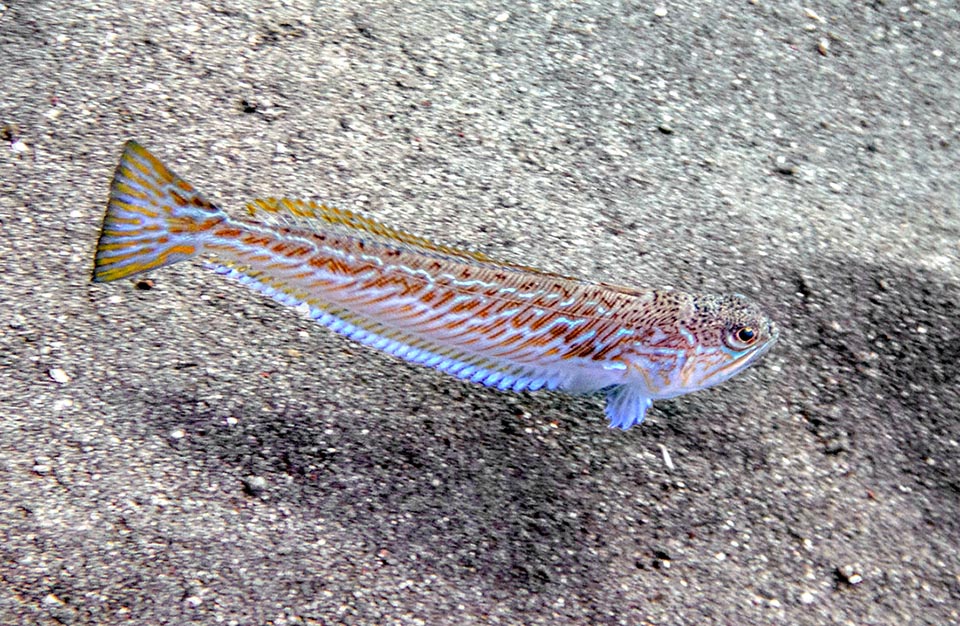
By night Trachinus draco often moves far from the sea bottom looking for preys © Chicco Caroli
Trachinus draco rests during the day buried into the seabeds letting the eyes and the tip of the first dorsal fin emerge.
It attacks, darting fast, the fishes and the small crustaceans passing nearby, but it mainly goes hunting during the night swimming also in pelagic waters far from the bottom. The strong venom of the dorsal fins, that acts on the nervous and circulatory systems, is instead used for defense.
In the Mediterranean the reproduction occurs in spring-summer depending on the regions, and, where the water is cooler, like in the Channel, between June and August.
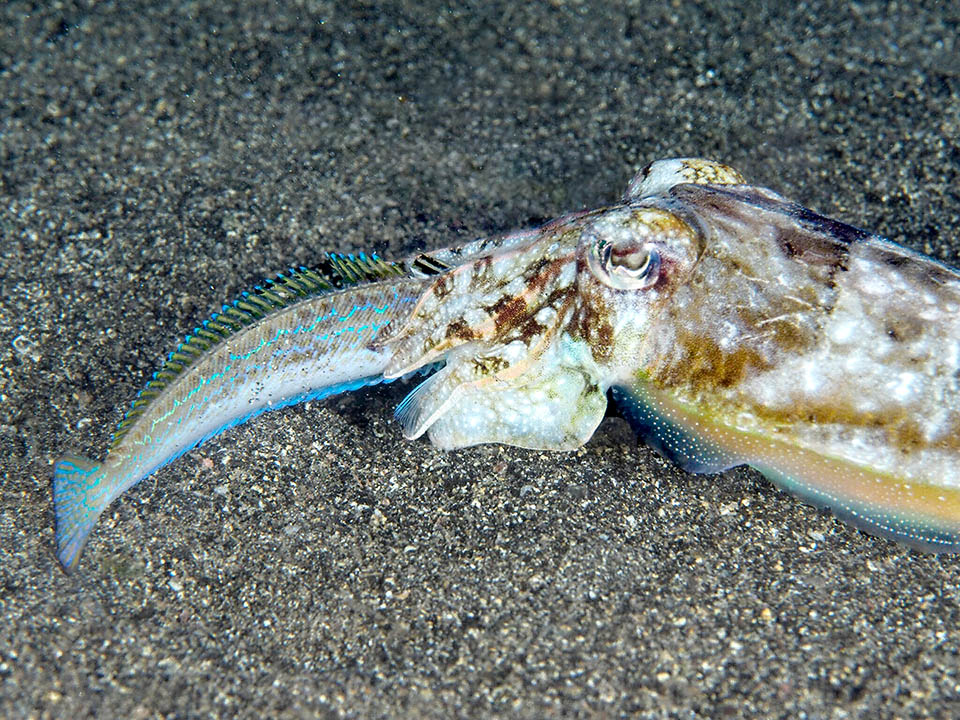
But this, probably young or clumsy, has ended up in the tentacles of an expert cuttlefish who avoids the venomous rays © Dennis Rabeling
The females, living about one year longer and consequently more numerous than the male, reach sexual maturity when about 12 cm.
The eggs and the larvae are planktonic.
The resilience of the species is mediocre with a minimum time for the doubling of the populations of 1,4-4,4 years.
The fishing. vulnerability, moderately high, marks 52 on a scale of 100, and in the IUCN Red List of the endangered species Trachinus draco appears as “Least Concern”.
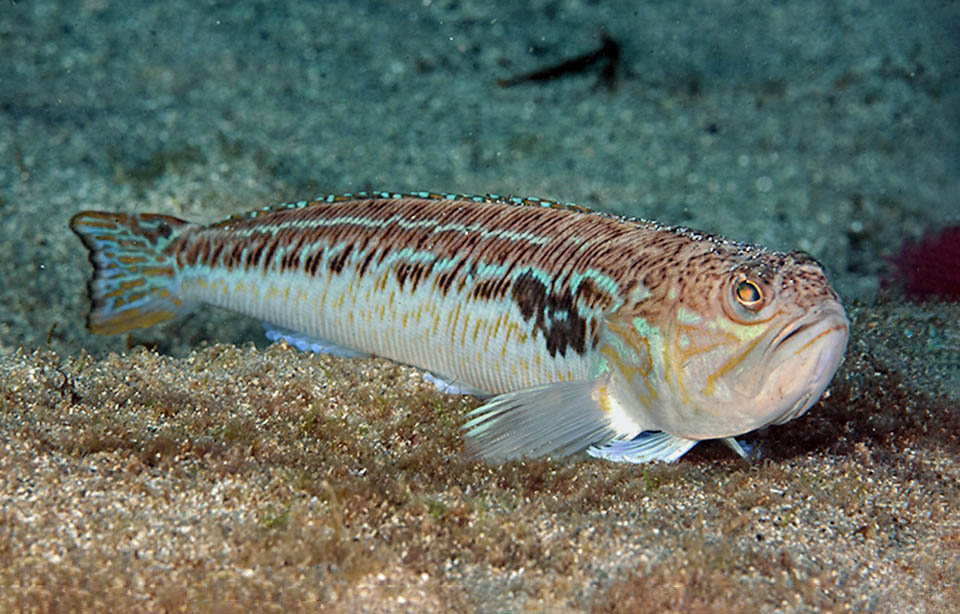
The flesh of Trachinus draco is excellent. The greatest specimens, who exceptionally can reach the length of 53 cm with a maximum weight of 1,9 kg, usually end up fried, boiled or baked, whilst the smallest ones are ingredients of the bouillabaisse, the very famous soup with pieces of fish and potatoes, emblem of Marseille © whodden
The flesh of the Greater weever is excellent and is often used for the bouillabaisse, soup with pieces of fish and potatoes, emblem of Marseille, accompanied by bread croutons rubbed with garlic and spread with “rouille”, a rust coloured tomato and Angler (Lophius piscatorius) liver sauce.
Caught by trawlers operating at mostly less than 20 m depths, it can also be eaten fried, boiled or baked in the oven. However, we have to be careful in the kitchen as its venom spines are active also when dead.
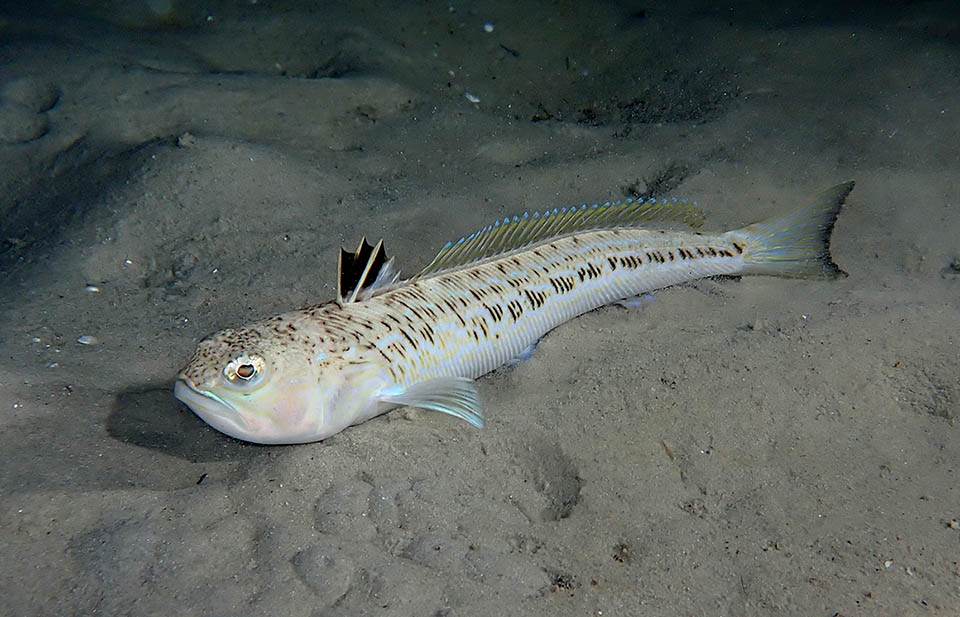
Beware: even if dead, in kitchen, the stings of this fish are dangerous and even more in beach if stepped on. They can cause vertigo, paralysis and at times serious anaphylactic allergic reactions. First aid stands in immersing the affected part in the hot water, because the venom is thermolabile at 40-50 °C © Sylvain Le Bris
The stings, very painful, may cause vertigo, paralysis and at times anaphylactic allergic reactions.
Of course, the venom is more active and dangerous in the sea: as a matter of fact, the bathers risk trampling on it when during the summer it rests in shallow waters and the clumsy fishermen may prick their own hands while taking it off from the net or taking it from the hook.
In these cases, the first aid is immersing the affected part in hot water, as the venom is thermolabile at 40-50 °C.
Synonyms
Trachinus lineatus Bloch & Schneider, 1801.
→ For general information about FISH please click here.
→ For general information about BONY FISH please click here
→ For general information about CARTILAGINOUS FISH please click here.
→ To appreciate the BIODIVERSITY of BONY FISH please click here.
→ To appreciate the BIODIVERSITY of CARTILAGINOUS FISH please click here.
